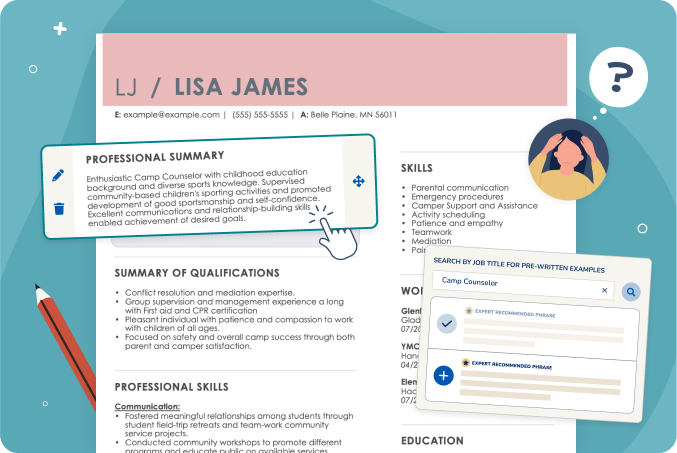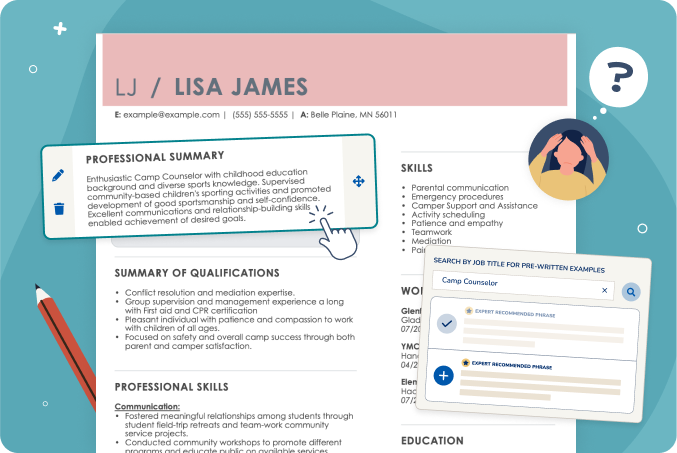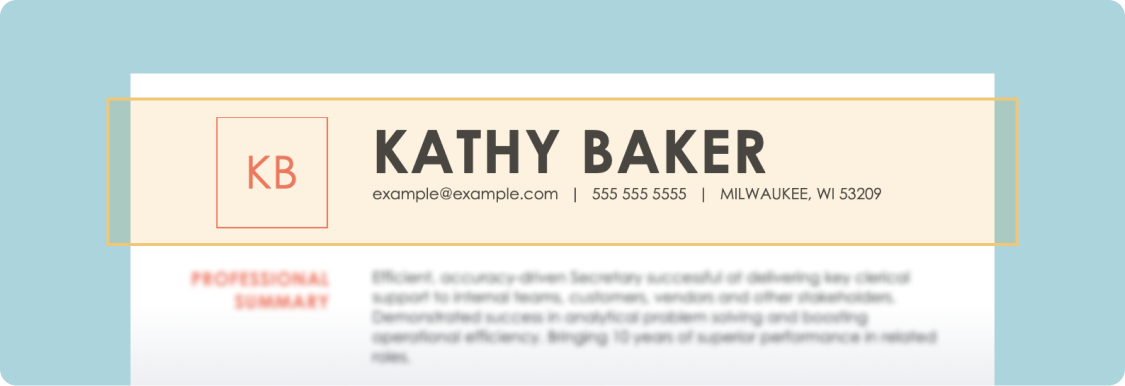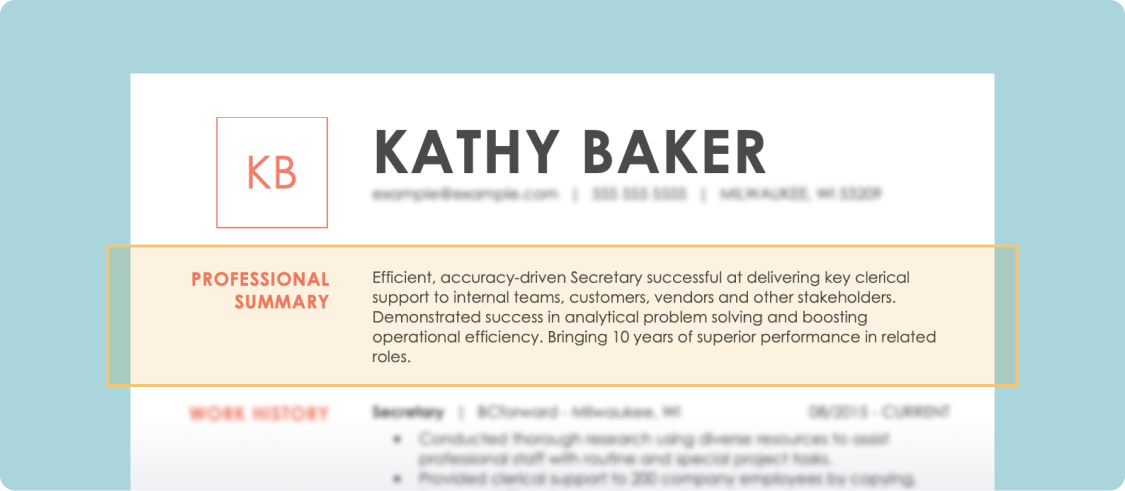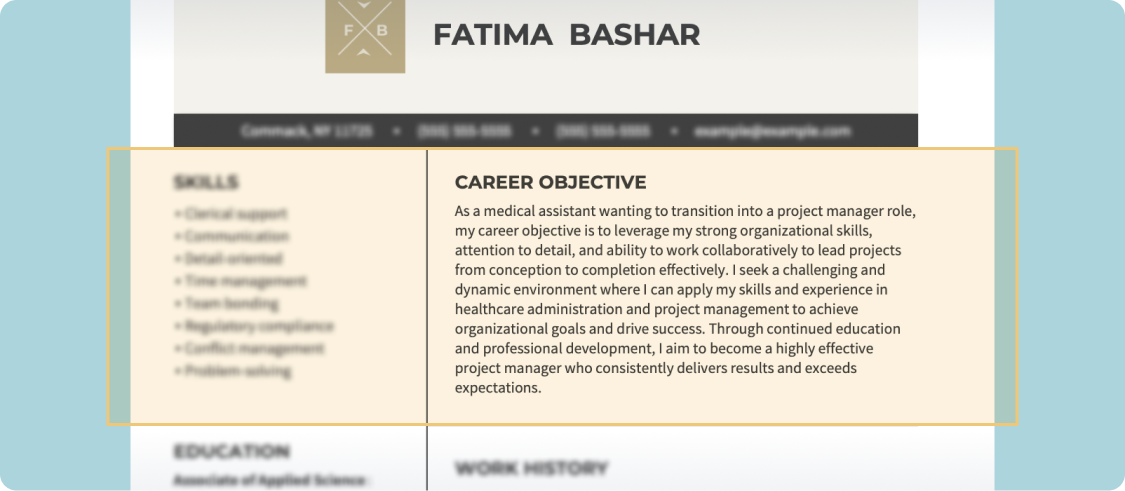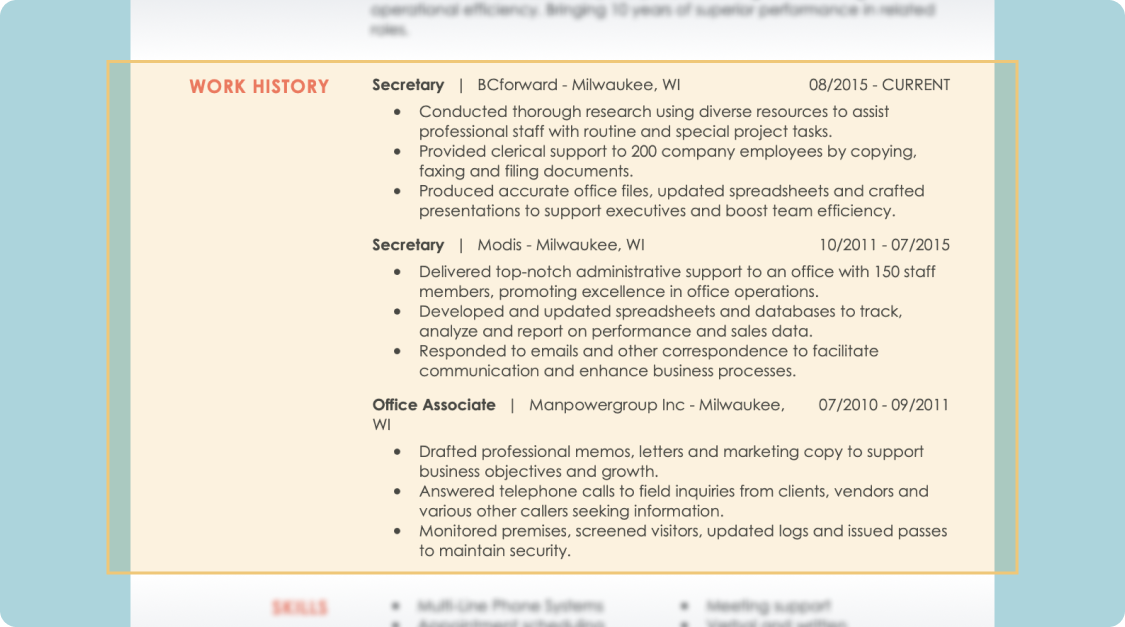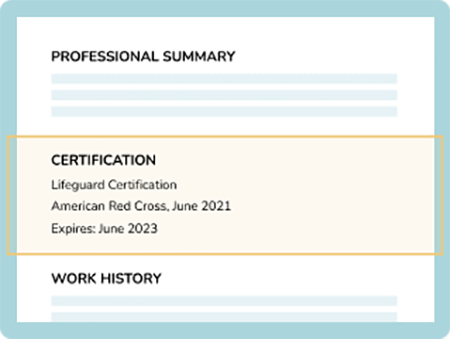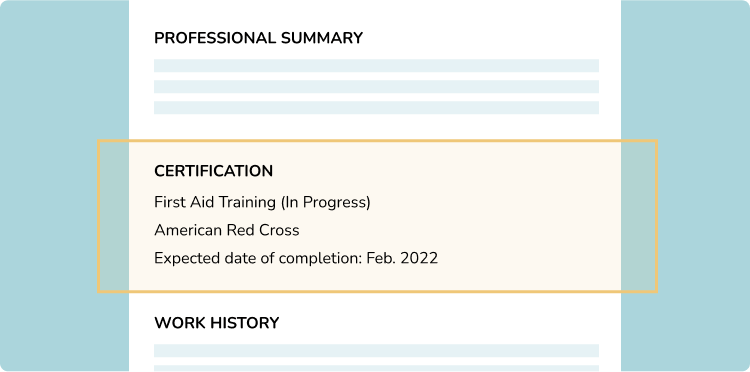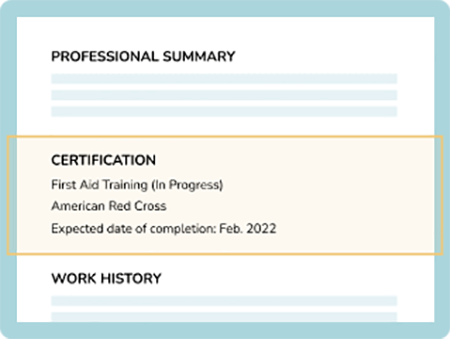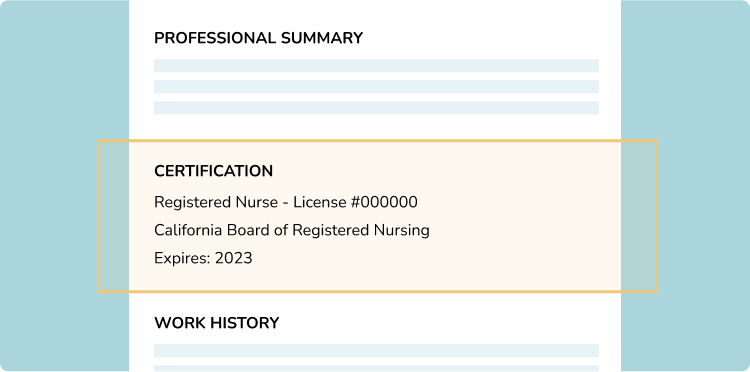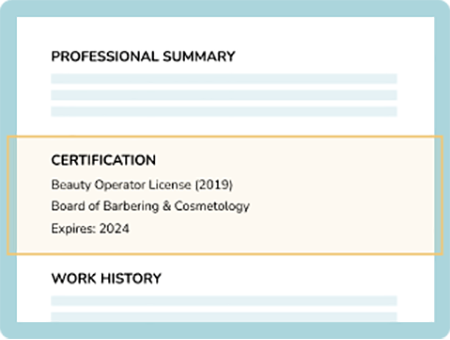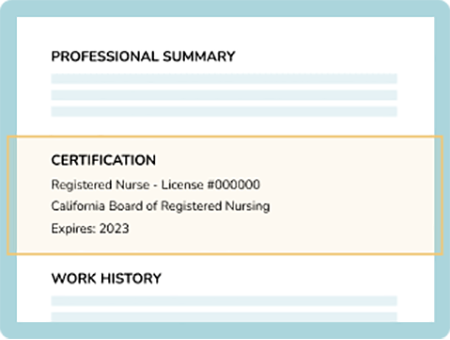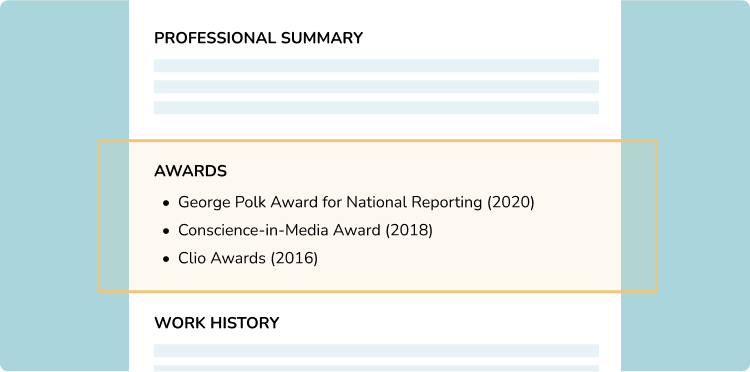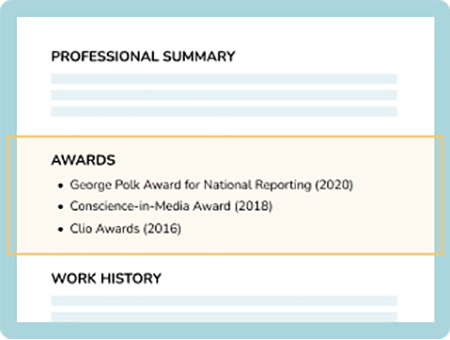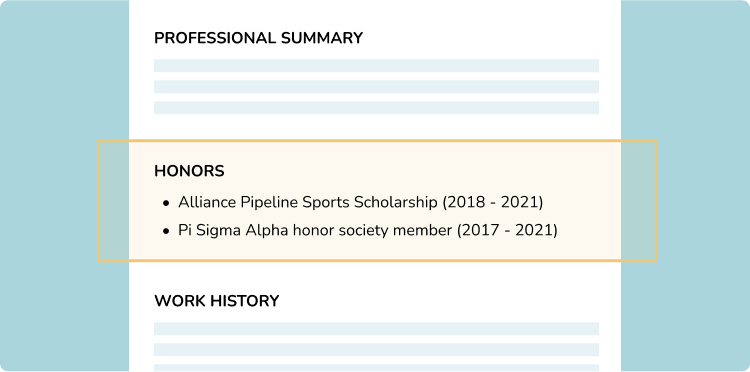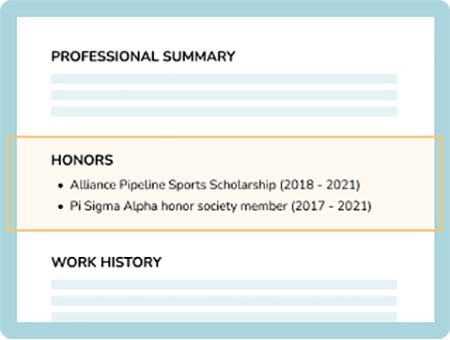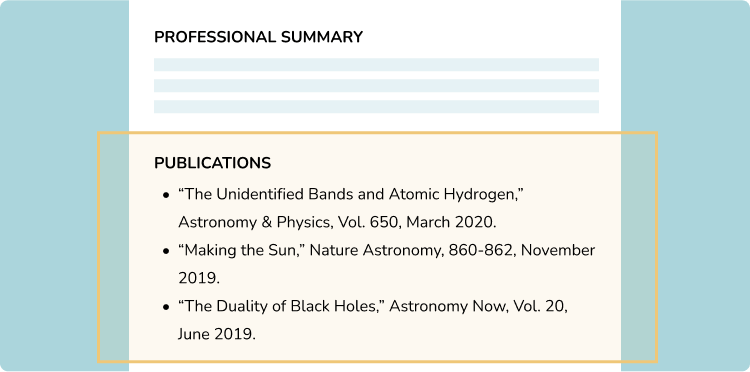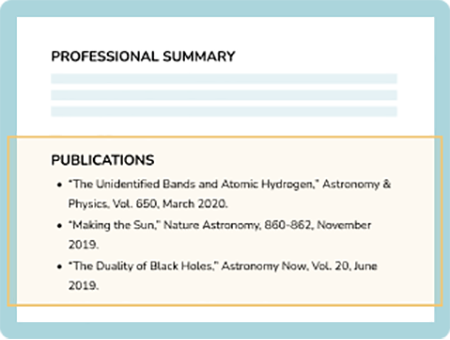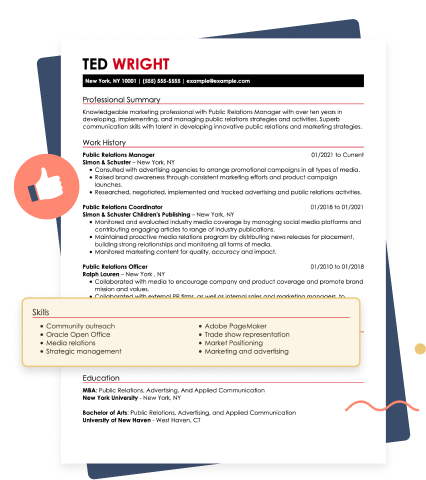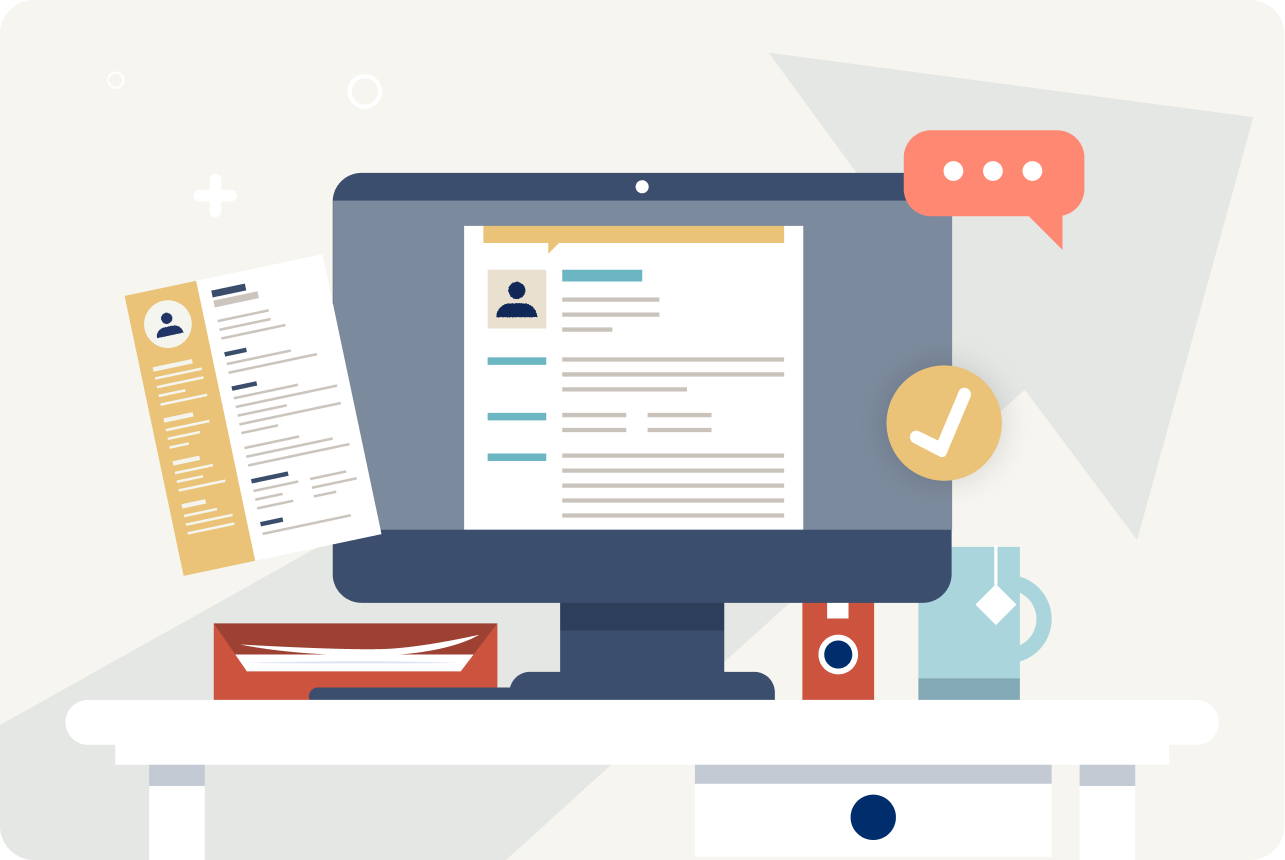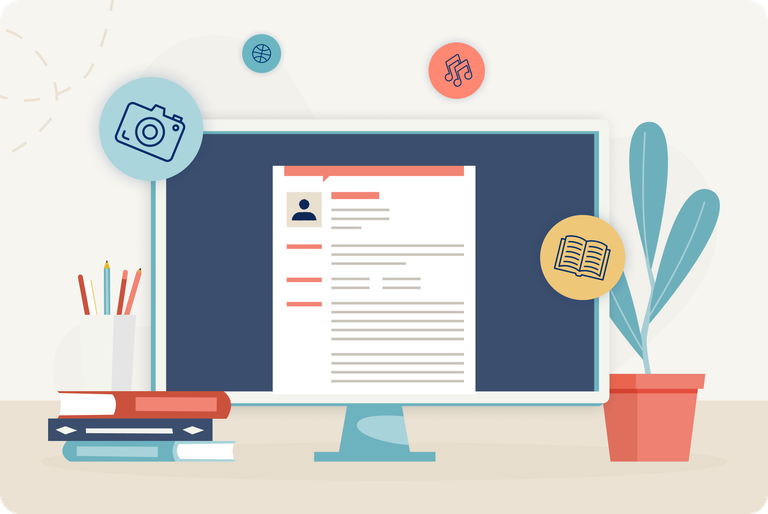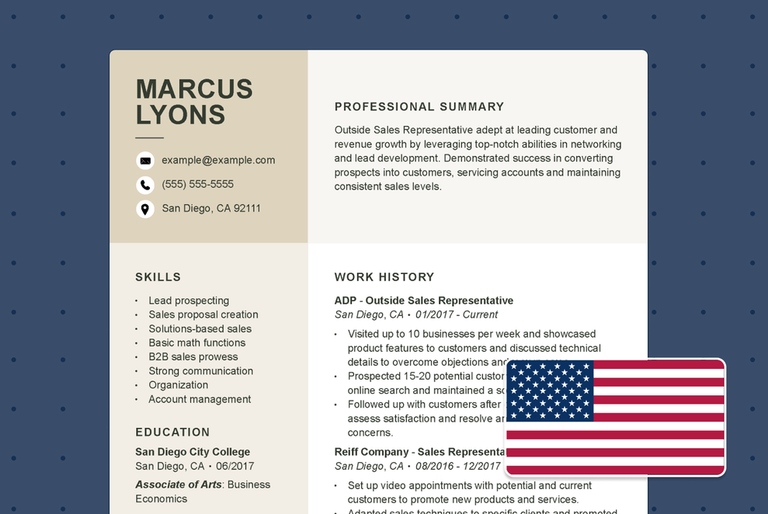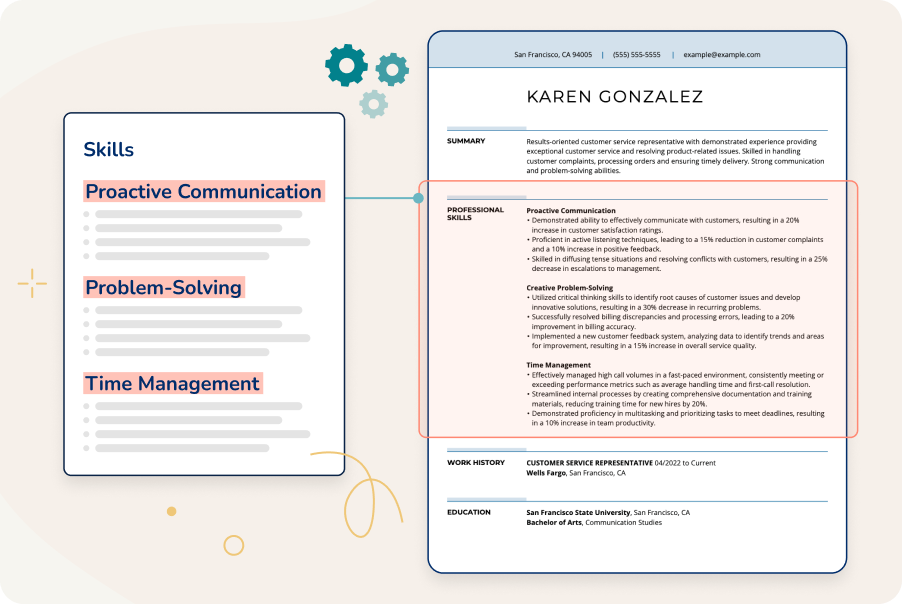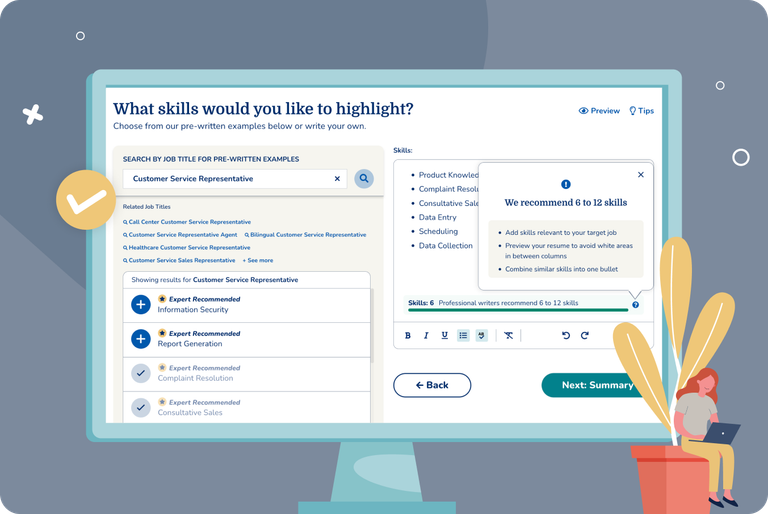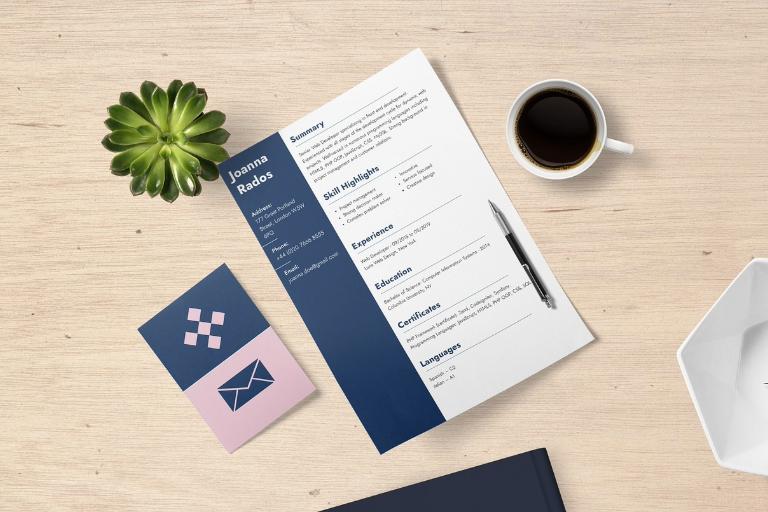A Complete Guide to Writing Your Perfect Resume

Our customers have been hired at: *Foot Note
You need a resume, and you need it fast. But with only seconds to make a strong first impression on hiring managers, how can you ensure your resume stands out?
In this guide, we’ll cover everything you need to know about how to write a resume, from essential sections to formatting tips for passing applicant tracking systems (ATS).
Get ready to increase your chances of landing the interview and securing your dream job.
Why a Professional Resume Matters
Your resume plays an essential role in the hiring process by serving as your first impression on potential employers and helping them quickly assess whether you’re a strong fit for the job.
By showcasing your qualifications, experience, and skills, a well-crafted resume can set you apart from other candidates and move you closer to securing an interview and landing the job.
Writing a compelling resume increases your chances of getting called back for an interview. But what makes a resume stand out, other than a professional resume template?
Check out this video walkthrough of a team member using our Resume Builder to see how you can speed up the process and create a winning resume right from your phone, tablet, or computer:
Video: Master Resume Building in 3 Minutes with MyPerfectResume
Key Components of a Great Resume
We’ll cover how to write and structure each section of your resume according to the latest best practices and employer expectations.
Contact information
One of the most important steps in writing a resume is displaying your contact information so that hiring managers can reach out to schedule an interview.
Here’s what to include in your resume header:
- Your full name
- A reliable phone number
- Your professional email address
- Your city, state, and ZIP code
- A link to your professional profile, website, or portfolio
We recommend exploring our library of professional resume examples to see effective ways to display your contact information. Here is an example to help you get started:
Resume summary or objective
A resume summary offers hiring managers a concise and impactful overview of your qualifications, skills, and experience related to the position.
Your resume summary should hook the reader and encourage them to continue reading. Avoid generic language and focus on the unique skills that set you apart.
Here is an example of how to write a resume summary:
If you are a first-time job seeker, changing careers, or returning to work after a long absence, you can write a resume objective instead.
A resume objective focuses on your transferable skills and career goals that relate to the role and company. Here is an example of how to write an objective for a resume:
You can use our AI Resume Summary Generator to instantly get a professional summary tailored to your skills and experience.
Skills
Create a bulleted list of around six to 10 skills on your resume. Include a mix of hard and soft skills to show recruiters you are a well-rounded candidate.
Hard skills are specific, teachable abilities or knowledge you’ve gained through education, training, or experience (e.g., data analysis, cybersecurity, and programming).
Soft skills are personal qualities and interpersonal abilities that affect how you work and interact with others (e.g., communication, leadership, and teamwork).
Prioritize skills mentioned in the job description to create an ATS-friendly resume that passes automated screening tools hiring managers use to scan and organize resumes.
You can use your AI Resume Skills Generator to search for your current or target job title and generate a tailored list of industry-specific skills:
AI Resume Skills Generator
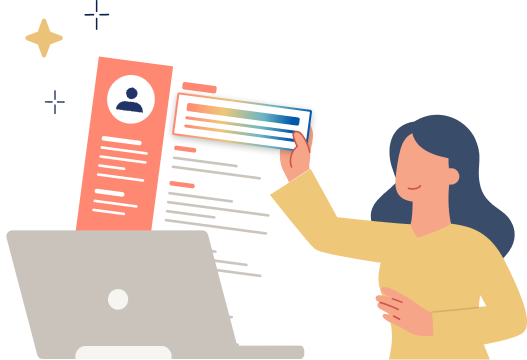
Your work history
Employers want to know what they can gain by hiring you. They will look at your resume work history section to see how you have used your skills to make an impact in the workplace.
List your roles in reverse-chronological order, with the most recent position at the top. Include your title, the company name and location, and employment dates.
For each job, display three to five work accomplishments in bullet points and quantify them when possible. Start each bullet with an action verb (e.g., “developed,” “resolved,” and “administered”).
Including quantifiable achievements in your resume gives employers a tangible idea of how you’ve positively contributed to the organization or company in past roles. Here is an example:
Education
Your resume education section should list your highest level of education first, including the degree earned, the school's name, and its location (city and state). Here are a few tips:
- You can include your graduation year if it was within the last five to 10 years. If you haven’t graduated yet, then write the expected graduation date.
- Include the full name of your degree on your resume or the degree you expect to receive. For example, “Bachelor of Science in Nursing” or “Bachelor of Arts in English.”
- Only include high school if you’re a high school student, you didn’t attend university, or if it is requested in the job description.
Here is an example of a resume education section:
EDUCATION
Columbia University | New York, NY
Bachelor of Science in Social Work
Optional sections
Including optional sections—like certifications, volunteer work, languages, or awards—can help you stand out and showcase additional strengths. Explore optional sections and examples below.
Certifications and licenses
Some jobs, such as nursing, accounting, and teaching, require candidates to have certifications and licenses.
Create a separate certifications section below your education section to list certifications, licenses, or professional training relevant to the role.
Example of a current certification:
Example of an “in progress” certification:
Example of a nursing license:
Volunteer experience
You can include volunteer experience on your resume if it’s relevant to the job, shows transferable skills, or helps fill employment gaps.
Format it like your work history section, highlighting your responsibilities and accomplishments. For example:
VOLUNTEER EXPERIENCE
Habitat for Humanity, Volunteer Builder, 2018-present
- Worked on construction projects to build and repair homes for low-income families.
- Collaborated with a team of volunteers and Habitat staff to complete projects on time and within budget.
American Red Cross, Volunteer Blood Donor Ambassador, 2017-2018
- Assisted with blood drives by welcoming donors, registering them, and providing information about the donation process.
- Helped to ensure a positive donor experience and encouraged repeat donations.
If you have minimal or no professional experience, consider adding relevant volunteer experience to your work history section. For clarity, make sure to include “volunteer” in the job title (e.g., “Volunteer Program Manager”).
Awards, honors, and publications
Include awards, honors, or publications on your resume if they’re relevant to the job or demonstrate exceptional achievement.
These sections are especially valuable in academic, creative, or research-focused fields.
If the award, honor, publication, or project is tied to your degree, you can include it as a bullet point in your education section below the university or high school name.
Example of an awards section on a resume:
Example of an honors section on a resume:
Example of a publications section on a resume:
Choosing the Best Resume Format
Explore the three primary resume formats to learn how to choose a format that aligns with your experience level and effectively highlights your skills and qualifications.
Chronological resume
The chronological resume format is the most commonly used and is preferred by most employers. This format places work experience front and center, making it ideal for candidates with a consistent work history and no employment gaps.
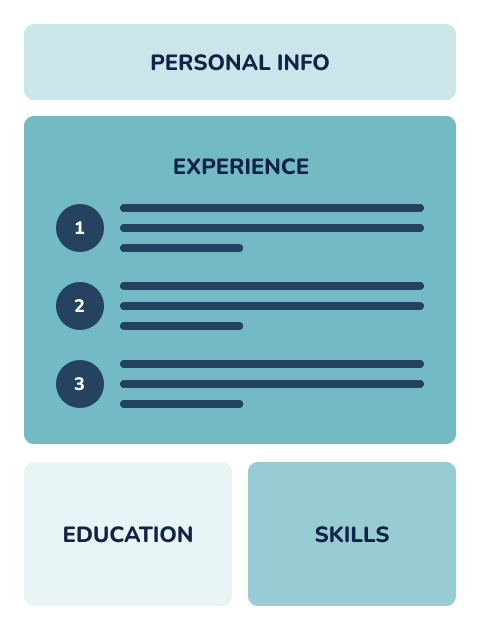
Functional resume
The functional resume format showcases your skills and training. It’s designed to highlight your marketable skills, even if your experience is limited. This format is excellent for those with employment gaps or limited professional experience.
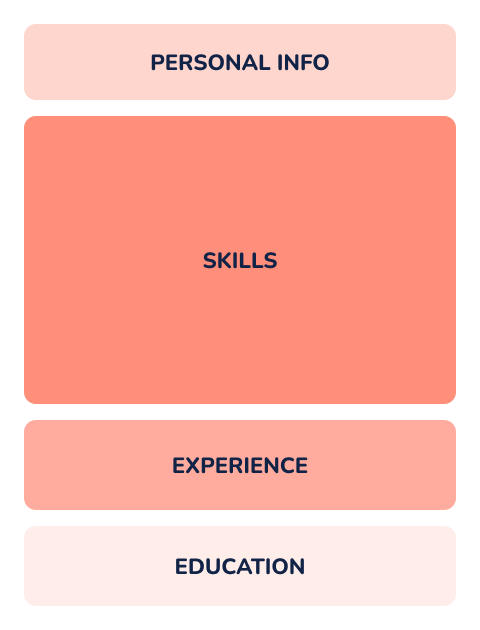
Combination resume
The combination resume format combines the best of the functional and chronological formats. This format allows you to showcase your skills while highlighting your relevant work experience. It’s an excellent choice for job seekers who are changing careers or industries.
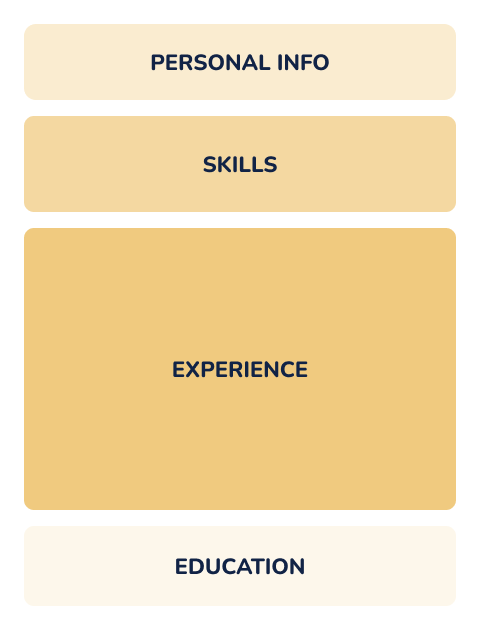
Tailoring Your Resume for Each Job
Tailoring your resume for each job application shows employers you’ve read the job description and understand what they’re looking for.
A customized resume makes a stronger, more targeted impression and increases your chances of landing an interview.
Identify skills or qualifications that are frequently repeated in the job description.
These are important keywords to include in your resume that can help you pass applicant tracking systems (ATS) and stand out to recruiters and hiring managers by demonstrating your fit for the role.
Tailoring your resume to fit the specific job you're applying for is crucial and showcases your most relevant experiences and achievements while demonstrating you understand the employer's needs.- Jasmine Escalera, Career Professional
Creating a Resume for Special Circumstances
Follow our resume tips to write your special circumstance resume and ensure hiring managers know you have what it takes to do the job.
Limited work experience
Explore the tips below on how to write a resume with no experience while still demonstrating your relevant skills and knowledge:
- Use a functional resume format to focus on your relevant soft skills and technical skills, and place your work history further down the page.
- Write a resume objective highlighting your academic training and aligning your career goals with the company's needs.
- Include certifications, relevant coursework, publications, or projects completed while listing your degree in the education section.
- In your work history section, include any volunteer or internship experience that can speak to your workplace abilities and achievements.
Changing careers
Follow these tips to write a career change resume that effectively showcases your ability to switch to a new industry:
- Choose a functional resume format to emphasize your transferable skills and how they can be applied to your new industry.
- In your resume objective, discuss your career change and how your current experience and strengths prepared you for this new challenge.
- Tailor your work history section to showcase achievements and workplace expertise that apply to your new industry.
- Highlight any certifications or online training demonstrating your commitment to learning new industry-specific skills.
Employment gaps
Here are a few tips on how to address an employment gap on your resume briefly and honestly, highlighting any productive activities you did during that time.
- Briefly explain your employment gap in your resume summary or objective and how you used that time to expand your industry knowledge or hone your skills.
- Create an additional "Core Competencies" or "Key Qualifications" section and list skills gained during your employment gap through volunteer work or personal projects.
- If your employment gap was substantial, treat it like a job. For example, if you took six years off to care for a relative, add it to your employment history section.
- Include any online workshops, certifications, or academic training you completed during your employment gap to show a commitment to skill development.
Searching for remote jobs? Our sister company, FlexJobs, updates listings daily. Find verified remote jobs—from remote transcription jobs to remote nursing jobs, and everything in between.
Common Mistakes to Avoid
- Typos and grammatical errors: Spelling or grammar mistakes can make your resume look rushed or unprofessional. Always proofread carefully and consider having someone else review it before submitting.
- Poor formatting: Cluttered layouts, inconsistent fonts, and hard-to-read formatting can make it difficult for hiring managers to scan your resume. Stick to clean, simple formatting with professional resume fonts, clear section headings, and bullet points.
- Using a generic resume: Sending the same resume to every employer can hurt your chances. Each role is different—tailor your resume to highlight the skills and experiences that match the specific job description.
- Including irrelevant information: Personal details, outdated experience, or unrelated jobs can distract from your qualifications. Keep your content focused on what’s most relevant to the position you're applying for.
- Making it too long: Recruiters spend seconds on an initial resume review. If your resume is too long or packed with unnecessary information, details may get overlooked. Aim for a one-page resume or a two-page resume, depending on your experience level.
- Listing duties instead of accomplishments: Don’t just describe your job responsibilities—highlight what you achieved. Use action verbs and include metrics when possible to show the impact of your work.
Proofreading and Finalizing
Before sending out your resume, it’s essential to take the time to carefully proofread and polish it. Taking the extra time to finalize your resume with care shows professionalism and can give you a valuable edge in a competitive job market.
Start by reviewing your resume line by line, checking for grammar, punctuation, and consistency in formatting, such as font sizes, bullet point styles, and date alignment. Reading your resume out loud can help you catch awkward phrasing or repeated words.
Our Resume Builder has a helpful spell-checking tool that scans your document and flags any mistakes. It’s also helpful to step away for a few hours (or even a day) and come back with fresh eyes. Better yet, ask a trusted friend, colleague, or career coach to review it.
You can use our ATS Resume Checker to scan your resume for over 30 common errors and get instant suggestions to improve your resume score.
Beyond the Resume: Writing Your Cover Letter
A well-written cover letter reinforces your resume and helps you stand out to hiring managers. It allows you to introduce yourself, express your interest in the role, and explain why you’re a great fit. It is also an effective place to explain employment gaps and career changes.
Align your cover letter with your resume by highlighting the same key skills and experiences, but in a more personal, narrative format. Tailor it to the job by addressing the employer’s needs directly and showing how you can add value to their team.
Once you select the perfect template, you can use our Cover Letter Generator to make a compelling letter in a matter of minutes. You’ll get expert content suggestions tailored to your industry, role, and experience level.
Key Takeaways
- Your resume is your first impression on hiring managers—make it count by showcasing your qualifications clearly and professionally.
- Include all essential sections like contact info, a strong summary, relevant work history, skills, and education. Include optional sections if they are relevant to the position.
- Choose the right resume format based on your experience level and career goals to present your background in the best light.
- Tailor your resume for each job by using keywords from the job description and focusing on the most relevant accomplishments.
- Proofread carefully before submitting—small errors can cost you the interview, so double-check every detail and polish your final version.
- Pair your resume with a cover letter to introduce yourself, personalize your application, and show how you align with the role and company.
FAQ
What should a resume look like?
Your resume should be well-formatted with clear sections, easy-to-read fonts, and a professional design. We recommend exploring our page on what a standout resume looks like for examples and guidance.
Where can I make a resume for free?
You can use our Resume Builder for free to make a resume with step-by-step prompts, expert insights, and professional content suggestions.
All you have to do is upload your resume or start a new one, answer a few questions, and within minutes, you’ll have a plain text resume that you can download for free.
How do you write a resume on Google Docs?
Here’s how to write a resume for a job application in Google Docs:
- Go to the Google Docs website and log in with your Google account.
- Click on the “Template Gallery” button in the top right corner of the page. Select the “Resumes” category and browse through the available templates.
- Once you choose a template, click “Use Template” to open it in a new document. Edit the text to include your information, such as your name, contact information, work experience, education, skills, and achievements.
- Once you finish editing your resume, save it by clicking “File” and then “Save.”
For a more user-friendly experience, we recommend using one of our Google Docs resume templates.
You can also write a resume from scratch in our Resume Builder and import it into Google Docs.
How do you make a resume in Microsoft Word?
Here’s how to write a resume in Microsoft Word:
- Open Microsoft Word on your computer and select “New Document” to create a new document.
- In the search bar, type “resume” and browse through the available templates. Select the template that best suits your needs.
- Once you choose a template, begin editing the text to include your information, such as your name, contact information, work experience, education, skills, and achievements.
- Once you finish editing your resume, save it by clicking on “File” and then “Save.”
We have a variety of Microsoft Word resume templates that you can use.
For expert content suggestions and resume writing advice, we recommend writing your resume in our Resume Builder.
How many jobs should you list on your resume?
It is recommended to list the most relevant and recent jobs that showcase your skills and experience.
A good rule of thumb is to include the last 10-15 years of your work experience or the three to four most recent jobs, whichever is greater.
How has AI impacted resume screening?
AI-powered tools can quickly analyze resumes, allowing companies to process more applications in less time.
Machine learning algorithms can learn from past hiring decisions and identify patterns in successful candidates, which can help recruiters identify the best-fit candidates.
There are several steps you can take to ensure your resume stands out in the era of AI, machine learning, and automated resume screening, such as customizing your resume for the job by incorporating relevant keywords and proofreading carefully.
You can also use our AI Resume Writer to improve your chances of your resume standing out in the era of AI by creating a well-structured, targeted resume.
Should I put my address on my resume?
In general, if you are comfortable sharing your address and it is relevant to the job you are applying for, you can include it on your resume.
However, if you prefer to keep your address private or it is irrelevant to the job, leaving it off is perfectly acceptable. You can always provide your address during the interview process if necessary.
Remember that you only need to include your city and state (and zip code if it is relevant), not your full mailing address.
How We Reviewed This Article
Since 2012, we have helped more than 11 million job seekers. We want to make your career journey accessible and manageable through our services and Career Center’s how-to guides and tips. In our commitment to bring you a transparent process, we present our Editorial Process.
Our customers have been hired at:*Foot Note
